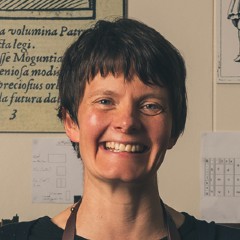You are not currently logged in. Please create an account or log in to view the full course.
Women in Renaissance Drama
- About
- Transcript
- Cite
Webster: The Duchess of Malfi
In this course, Professor Helen Smith (University of York) explores John Webster's 'The Duchess of Malfi'. In the first module, we think about stereotypes about women in early modern England and their presentation on stage. After that, we introduce the Duchess of Malfi itself – when it was written and first performed, its key preoccupations, etc; – before turning in the third module to the theme of bodies and spaces in the play. In the fourth module, we think about the theme of secrets and secretaries (the words are etymologically related), before turning in the fifth module the play's critical history, from contemporary reactions of the play to the most recent scholarship.
Women in Renaissance Drama
In this module, we think about the presentation of women in Renaissance drama, focusing in particular on: (i) the negative stereotype of women in Heinrich Kramer's Malleus Maleficarum (1486/7), and the justification for such a stereotype in the Book of Genesis; (ii) the challenge to such negative stereotypes put forward by writers such as Emilia Lanier; (iii) the relationship between the ideal representation of women in (male-authored) Renaissance texts and what women were really like; (iv) the interaction between people say about women and what women are actually like: the character of Mother Sawyer in The Witch of Edmonton (1621); (v) the interest in female language, especially its ability to persuade, charm, tempt, etc.: Lucio's recognition of Isabel's powers of persuasion in Measure for Measure (1604); (vi) the importance of the Duchess' voice in The Duchess of Malfi, the one part of her that persists after she dies ("Many have suppos'd it is a spirit / That answers"); (vii) the reduction of female characters to the physical organs of speech, e.g. the description of Isabel in Measure of Measure as "the tongue of Isabel"; and (viii) the fact that female characters would have been played by male actors, and the fundamental unreality of the femininity we see on stage.
Cite this Lecture
APA style
Smith, H. (2021, March 24). Webster: The Duchess of Malfi - Women in Renaissance Drama [Video]. MASSOLIT. https://massolit.io/courses/webster-the-duchess-of-malfi-smith/bodies-and-spaces
MLA style
Smith, H. "Webster: The Duchess of Malfi – Women in Renaissance Drama." MASSOLIT, uploaded by MASSOLIT, 24 Mar 2021, https://massolit.io/courses/webster-the-duchess-of-malfi-smith/bodies-and-spaces

